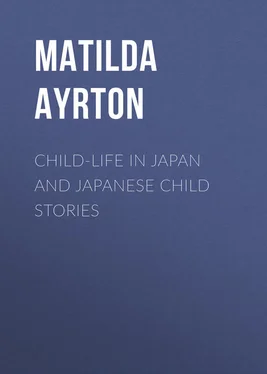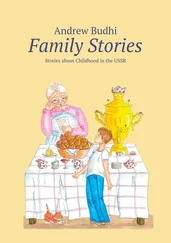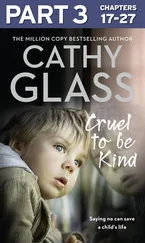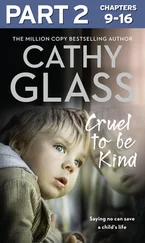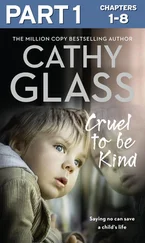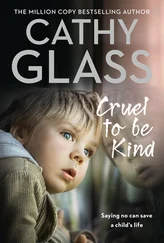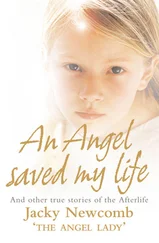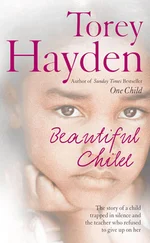Matilda Ayrton - Child-Life in Japan and Japanese Child Stories
Здесь есть возможность читать онлайн «Matilda Ayrton - Child-Life in Japan and Japanese Child Stories» — ознакомительный отрывок электронной книги совершенно бесплатно, а после прочтения отрывка купить полную версию. В некоторых случаях можно слушать аудио, скачать через торрент в формате fb2 и присутствует краткое содержание. ISBN: , Жанр: foreign_antique, foreign_prose, на английском языке. Описание произведения, (предисловие) а так же отзывы посетителей доступны на портале библиотеки ЛибКат.
- Название:Child-Life in Japan and Japanese Child Stories
- Автор:
- Жанр:
- Год:неизвестен
- ISBN:http://www.gutenberg.org/ebooks/28979
- Рейтинг книги:5 / 5. Голосов: 1
-
Избранное:Добавить в избранное
- Отзывы:
-
Ваша оценка:
- 100
- 1
- 2
- 3
- 4
- 5
Child-Life in Japan and Japanese Child Stories: краткое содержание, описание и аннотация
Предлагаем к чтению аннотацию, описание, краткое содержание или предисловие (зависит от того, что написал сам автор книги «Child-Life in Japan and Japanese Child Stories»). Если вы не нашли необходимую информацию о книге — напишите в комментариях, мы постараемся отыскать её.
Child-Life in Japan and Japanese Child Stories — читать онлайн ознакомительный отрывок
Ниже представлен текст книги, разбитый по страницам. Система сохранения места последней прочитанной страницы, позволяет с удобством читать онлайн бесплатно книгу «Child-Life in Japan and Japanese Child Stories», без необходимости каждый раз заново искать на чём Вы остановились. Поставьте закладку, и сможете в любой момент перейти на страницу, на которой закончили чтение.
Интервал:
Закладка:
The games and sports of Japanese children have been so well described by Professor Griffis, that we give, as an Appendix, his account of their doings.
SEVEN SCENES OF CHILD-LIFE IN JAPAN
hese little boys all live a long way off in islands called "Japan." They have all rather brown chubby faces, and they are very merry. Unless they give themselves a really hard knock they seldom get cross or cry.
In the second large picture two of the little boys are playing at snowball. Although it may be hotter in the summer in their country than it is here, the winter is as cold as you feel it. Like our own boys, these lads enjoy a fall of snow, and still better than snowballing they like making a snowman with a charcoal ball for each eye and a streak of charcoal for his mouth. The shoes which they usually wear out of doors are better for a snowy day than your boots, for their feet do not sink into the snow, unless it is deep. These shoes are of wood, and make a boy seem to be about three inches taller than he really is. The shoe, you see, has not laces or buttons, but is kept on the foot by that thong which passes between the first and second toe. The thong is made of grass, and covered with strong paper, or with white or colored calico. The boy in the check dress wears his shoes without socks, but you see the other boy has socks on. His socks are made of dark blue calico, with a thickly woven sole, and a place, like one finger of a glove, for his big toe. If you were to wear Japanese shoes, you would think the thong between your toes very uncomfortable. Yet from their habit of wearing this sort of shoe, the big toe grows more separate from the other toes, and the skin between this and the next toe becomes as hard as the skin of a dog's or a cat's paw.
he boys are not cold, for their cotton clothes, being wadded, are warm and snug. One boy has a rounded pouch fastened to his sash. It is red and prettily embroidered with flowers or birds, and is his purse, in which he keeps some little toys and some money. The other boy very likely has not a pouch, but he has two famous big pockets. Like all Japanese, he uses the part of his large sleeve which hangs down as his pocket. Thus when a group of little children are disturbed at play you see each little hand seize a treasured toy and disappear into its sleeve, like mice running into their holes with bits of cheese.
In the next large picture are two boys who are fond of music. One has a flute, which is made of bamboo wood. These flutes are easy to make, as bamboo wood grows hollow, with cross divisions at intervals. If you cut a piece with a division forming one end you need only make the outside holes in order to finish your flute.
The child sitting down has a drum. His drum and the paper lanterns hanging up have painted on them an ornament which is also the crest of the house of "Arima." 2 2 Arima was one of the daimios or landed nobleman, nearly three hundred in number, out of whom has been formed the new nobility of Japan, a certain number of which are in the Upper House of the Imperial Diet.
If these boys belong to this family they wear the same crest embroidered on the centre of the backs of their coats.
Korean Lion is the title of the picture which forms the frontispiece; it represents a game that children in Japan are very fond of playing. They are probably trying to act as well as the maskers did whom they saw on New Year's Day, just as our children try and imitate things they see in a pantomime. The masker goes from house to house accompanied by one or two men who play on cymbals, flute, and drum. He steps into a shop where the people of the house and their friends sit drinking tea, and passers-by pause in front of the open shop to see the fun. He takes a mask, like the one in the picture, off his back and puts it over his head. This boar's-head mask is painted scarlet and black, and gilt. It has a green cloth hanging down behind, in order that you may not perceive where the mask ends and the mans body begins. Then the masker imitates an animal. He goes up to a young lady and lays down his ugly head beside her to be patted, as "Beast" may have coaxed "Beauty" in the fairy tale. He grunts, and rolls, and scratches himself. The children almost forget he is a man, and roar with laughter at the funny animal. When they begin to tire of this fun he exchanges this mask for some of the two or three others he carries with him. He puts on a mask of an old woman over his face, and at the back of his head a very different second mask, a cloth tied over the centre of the head, making the two faces yet more distinct from each other. He has quickly arranged the back of his dress to look like the front of a person, and he acts, first presenting the one person to his spectators, then the other. He makes you even imagine he has four arms, so cleverly can he twist round his arm and gracefully fan what is in reality the back of his head.
The tops the lads are playing with in this picture are not quite the same shape as our tops, but they spin very well. Some men are so clever at making spinning-tops run along strings, throwing them up into the air and catching them with a tobacco-pipe, that they earn a living by exhibiting their skill.
Some of the tops are formed of short pieces of bamboo with a wooden peg put through them, and the hole cut in the side makes them have a fine hum as the air rushes in whilst they spin.
The boys in the next large picture must be playing with the puppies of a large dog, to judge from their big paws. There are a great many large dogs in the streets of Tokio; some are very tame, and will let children comb their hair and ornament them and pull them about. These dogs do not wear collars, as do our pet dogs, but a wooden label bearing the owner's name is hung round their necks. Other big dogs are almost wild. 3 3 Wild-dogs: ownerless dogs have now been exterminated, and every dog in Japan is owned, licensed, taxed, or else liable to go the way of the old wolfish-looking curs. The pet spaniel-like dogs are called chin .
Half-a-dozen of these dogs will lie in one place, stretched drowsily on the grassy city walls under the trees, during the daytime. Towards evening they rouse themselves and run off to yards and rubbish-heaps to pick up what they can. They will eat fish, but two or three dogs soon get to know where the meat-eating Englishmen live. They come trotting in regularly with a business-like air to search among the day's refuse for bones. Should any interloping dog try to establish a right to share the feast he can only gain his footing after a victorious battle. All these dogs are very wolfish-looking, with straight hair, which is usually white or tan-colored. There are other pet dogs kept in houses. These look something like spaniels. They are small, with their black noses so much turned up that it seems as if, when they were puppies, they had tumbled down and broken the bridge of their nose. They are often ornamented like dog Toby in "Punch and Judy," with a ruff made of some scarlet stuff round their necks.
After the heavy autumn rains have filled the roads with big puddles, it is great fun, this boy thinks, to walk about on stilts. You see him on page 11. His stilts are of bamboo wood, and he calls them "Heron-legs," after the long-legged snowy herons that strut about in the wet rice-fields. When he struts about on them, he wedges the upright between his big and second toe as if the stilt was like his shoes. He has a good view of his two friends who are wrestling, and probably making hideous noises like wild animals as they try to throw one another. They have seen fat public wrestlers stand on opposite sides of a sanded ring, stoop, rubbing their thighs, and in a crouching attitude and growling, slowly advance upon one another. Then when near to one another, the spring is made and the men close. If after some time the round is not decided by a throw, the umpire, who struts about like a turkey-cock, fanning himself, approaches. He plucks the girdle of the weaker combatant, when the wrestlers at once retire to the sides of the arena to rest, and to sprinkle a little water over themselves.
Читать дальшеИнтервал:
Закладка:
Похожие книги на «Child-Life in Japan and Japanese Child Stories»
Представляем Вашему вниманию похожие книги на «Child-Life in Japan and Japanese Child Stories» списком для выбора. Мы отобрали схожую по названию и смыслу литературу в надежде предоставить читателям больше вариантов отыскать новые, интересные, ещё непрочитанные произведения.
Обсуждение, отзывы о книге «Child-Life in Japan and Japanese Child Stories» и просто собственные мнения читателей. Оставьте ваши комментарии, напишите, что Вы думаете о произведении, его смысле или главных героях. Укажите что конкретно понравилось, а что нет, и почему Вы так считаете.
